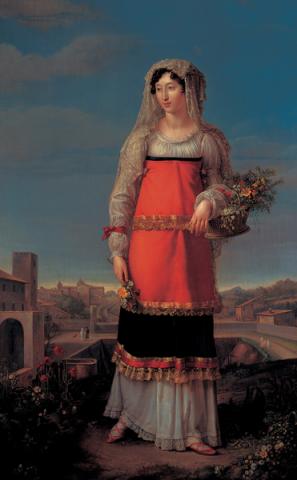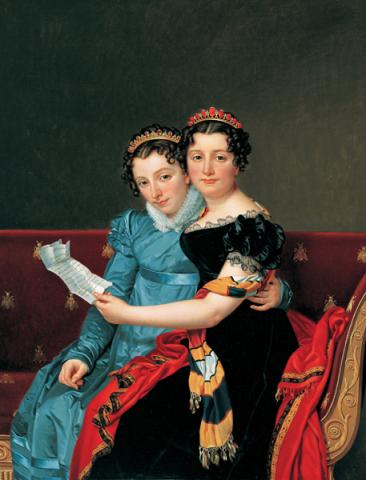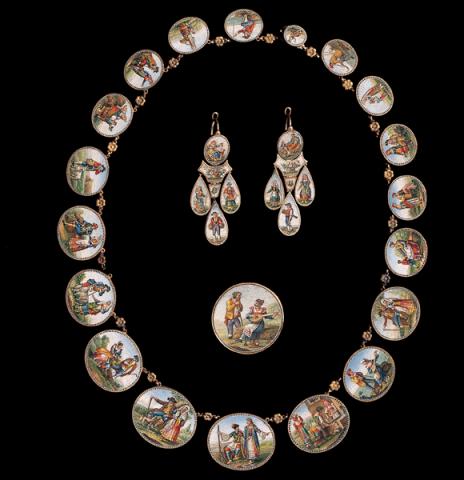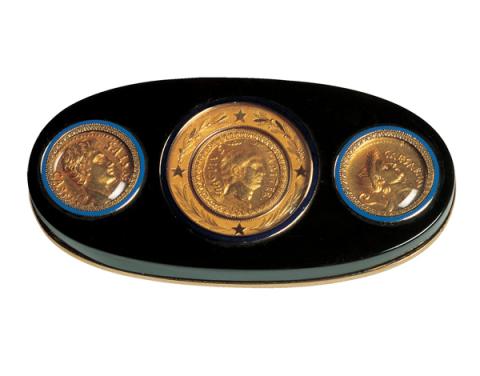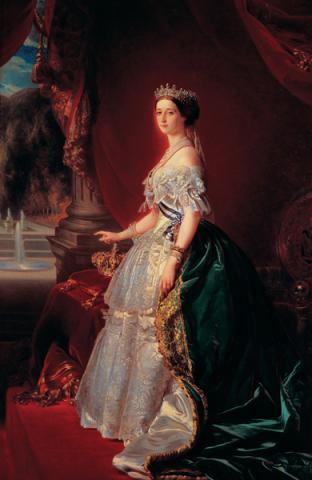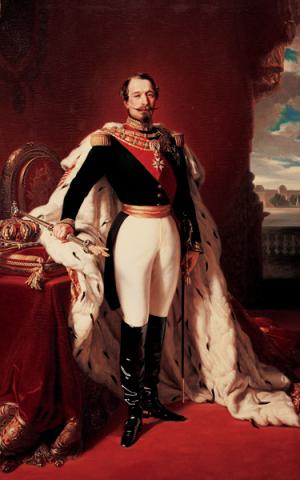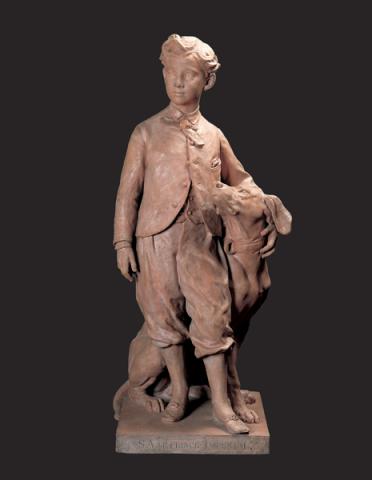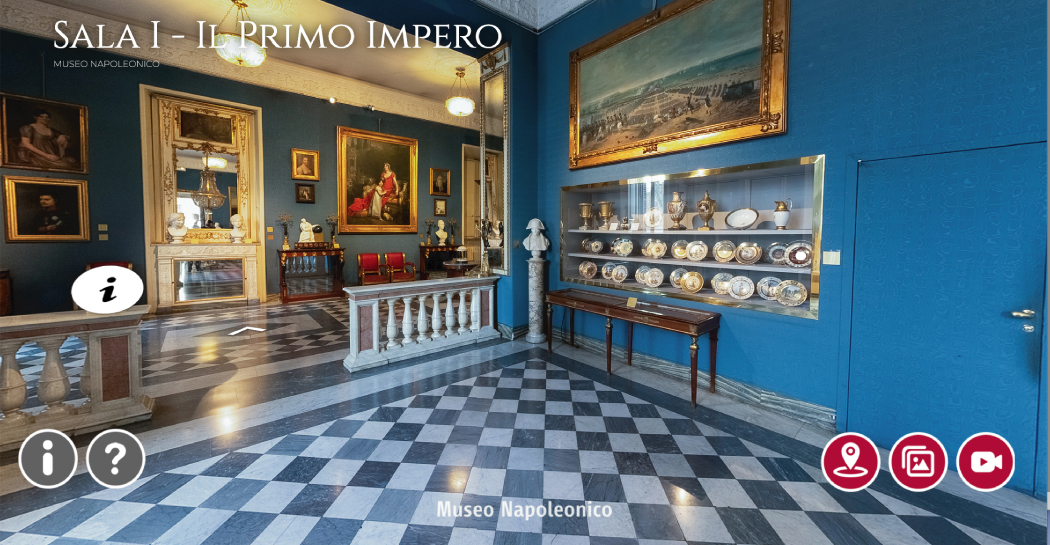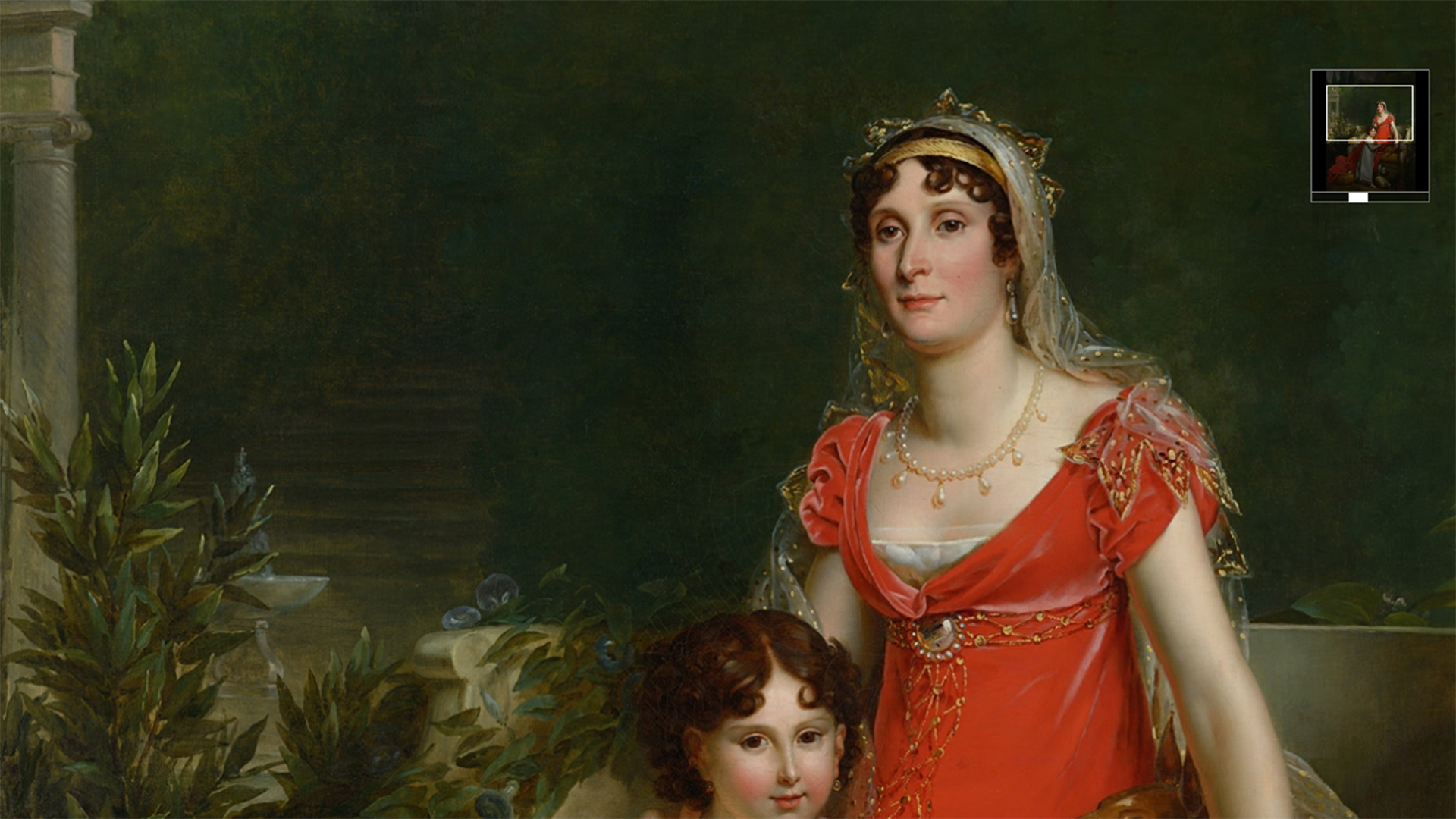Room III - The Second Empire
In this room, dedicated to the Second Empire (1852-1870), are displayed paintings, sculptures, engravings, furniture, and other objects from the period of French history in which Napoleon III predominated. They exemplify the great ferment of artistic production which took place under the reassuring motto “The Empire is Peace”.
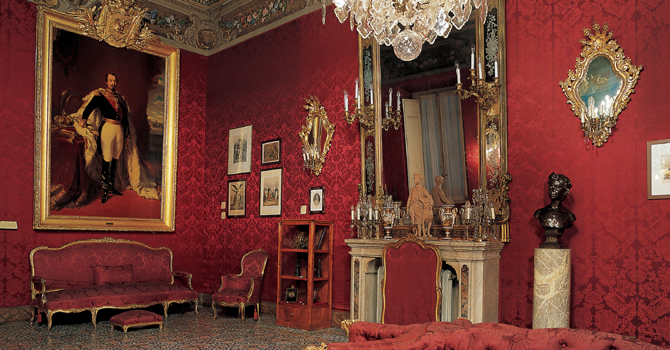
As well as the two official portraits of the imperial couple, created by Franz-Xavier Winterhalter, various prints are displayed which illustrate important moments in the politics of diplomatic and economic events which the Emperor desired. Other works are memorials to the events surrounding the Imperial Prince Napoleon Eugenio, the only son of Napoleon III and Eugenia: the busts of Jean-Baptiste Carpeaux, the wax statuette of Emmanuel Frémiet which shows him in the uniform of Drummer of the Guards, the last photograph of him, as an official of the English army, prior to his departure for South Africa and the watercolour by Orlando Norio which documents his funeral at Chislehurst, a village not far from Londra.
In the oval case are conserved, as well as several commemorative medallions, a pair of miniature portraits, showing Queen Victoria and Napoleon III, the dagger in gilded bronze and mother of pearl, which was given in 1830 by the Braccini brothers, natives of Spoleto, to Napoleon Luigi, the brother of the future emperor, and a group of bouquet holders, an essential element of feminine apparel for the great court balls. The sofa and the armchairs which furnish the room come from a Parisian residence belonging to Matilde Bonaparte.
Franz Xaver Winterhalter (Menzenschwad 1805 - Frankfurt 1873)
Franz Xaver Winterhalter (Menzenschwad 1805 - Frankfurt 1873)
Jean Baptiste Carpeaux (1827 - 1875)


























